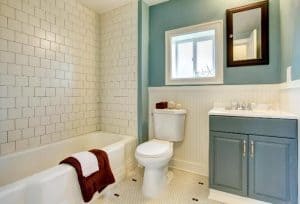FG Reglazing’s Role in Mold and Mildew Prevention
Maintaining a clean and hygienic environment in our homes is a top priority for many homeowners. One of the persistent challenges that homeowners face is the growth of mold and mildew, especially in areas prone to moisture like bathrooms and kitchens. Reglazing, a process that involves refinishing and rejuvenating surfaces, emerges as a crucial solution in preventing the development of mold and mildew. In this article, we will explore the role that reglazing plays in mitigating the risks associated with mold and mildew growth. Contact us to learn more about bathtub resurfacing near me
How FG Reglazing Helps Prevent Mold and Mildew Growth

Understanding Mold and Mildew:
Mold and mildew are types of fungi that thrive in damp and humid conditions. Bathrooms, kitchens, and other areas with high moisture content become breeding grounds for these unwelcome guests. Not only do they compromise the aesthetics of surfaces, but they also pose health risks to inhabitants, triggering respiratory problems and allergies. To combat this issue, homeowners often turn to reglazing as an effective preventive measure.
The Reglazing Process:
Reglazing involves the application of a new finish on surfaces, such as bathtubs, tiles, and sinks, to restore their appearance and functionality. This process is a cost-effective alternative to complete replacements, providing a fresh look without the hefty price tag. The application of a reglazing coat creates a protective barrier that seals surfaces, making them resistant to moisture infiltration. This sealant not only enhances the durability of the surfaces but also plays a pivotal role in preventing the growth of mold and mildew.
Sealing Porous Surfaces:
Many bathroom and kitchen surfaces, such as tiles and grout lines, are inherently porous. These pores create an ideal environment for moisture to seep in, fostering the growth of mold and mildew. Reglazing addresses this issue by sealing these porous surfaces effectively. The application of a high-quality reglazing product creates a waterproof barrier that inhibits moisture penetration, making it significantly harder for mold and mildew to take hold.
Eliminating Existing Mold and Mildew:
Reglazing not only acts as a preventive measure but also serves as an effective solution for eliminating existing mold and mildew. During the reglazing process, the surfaces are thoroughly cleaned and sanitized before the new finish is applied. This meticulous preparation helps to eradicate any traces of mold or mildew, ensuring a fresh start for the surfaces. By removing existing spores and preventing their recurrence, reglazing contributes to a healthier and more hygienic living environment.
Cost-Effectiveness and Sustainability:
In comparison to full-scale replacements, reglazing proves to be a cost-effective and sustainable solution. Not only does it save homeowners from the financial burden of purchasing new fixtures and surfaces, but it also reduces the environmental impact associated with manufacturing and disposing of old materials. The eco-friendly nature of reglazing aligns with the growing awareness of sustainable living practices, making it an attractive choice for those who seek both economic and environmental benefits.
Long-Term Benefits:
Investing in reglazing offers homeowners long-term benefits beyond preventing mold and mildew growth. The protective seal created during the reglazing process enhances the durability of surfaces, making them more resistant to daily wear and tear. This longevity contributes to the overall maintenance of a clean and aesthetically pleasing living space, ensuring that the rejuvenated surfaces continue to resist mold and mildew for years to come.
Conclusion:
In the battle against mold and mildew, reglazing emerges as a formidable ally for homeowners. By sealing porous surfaces, eliminating existing mold, and providing a cost-effective and sustainable alternative to replacements, reglazing plays a crucial role in creating a hygienic and visually appealing living environment.
